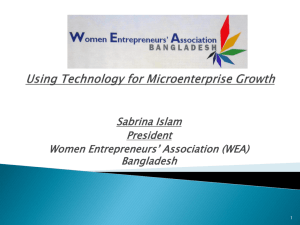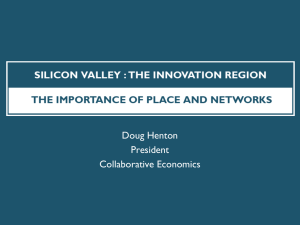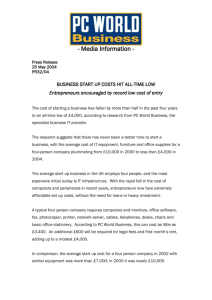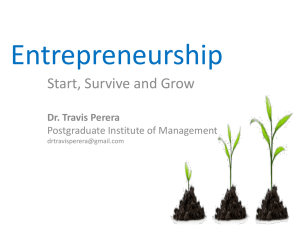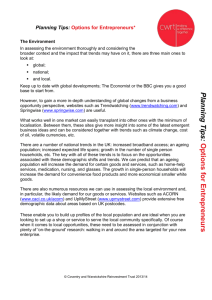Exam 1 Study Guide
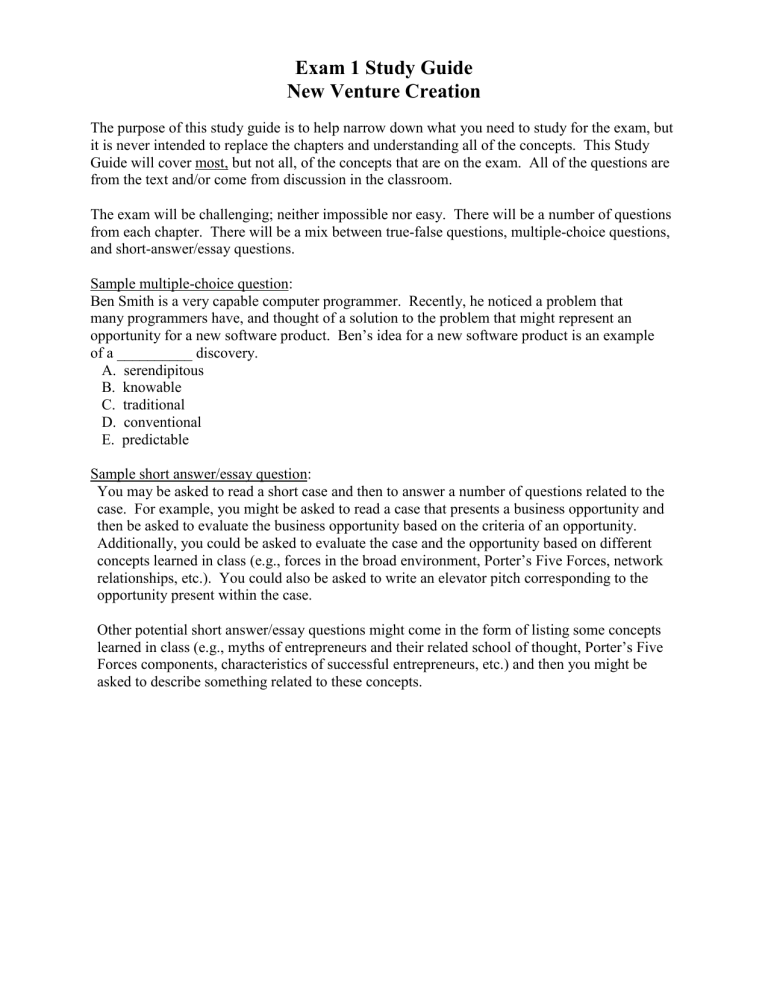
Exam 1 Study Guide
New Venture Creation
The purpose of this study guide is to help narrow down what you need to study for the exam, but it is never intended to replace the chapters and understanding all of the concepts. This Study
Guide will cover most, but not all, of the concepts that are on the exam. All of the questions are from the text and/or come from discussion in the classroom.
The exam will be challenging; neither impossible nor easy. There will be a number of questions from each chapter. There will be a mix between true-false questions, multiple-choice questions, and short-answer/essay questions.
Sample multiple-choice question:
Ben Smith is a very capable computer programmer. Recently, he noticed a problem that many programmers have, and thought of a solution to the problem that might represent an opportunity for a new software product. Ben’s idea for a new software product is an example of a __________ discovery.
A. serendipitous
B. knowable
C. traditional
D. conventional
E. predictable
Sample short answer/essay question:
You may be asked to read a short case and then to answer a number of questions related to the case. For example, you might be asked to read a case that presents a business opportunity and then be asked to evaluate the business opportunity based on the criteria of an opportunity.
Additionally, you could be asked to evaluate the case and the opportunity based on different concepts learned in class (e.g., forces in the broad environment, Porter’s Five Forces, network relationships, etc.). You could also be asked to write an elevator pitch corresponding to the opportunity present within the case.
Other potential short answer/essay questions might come in the form of listing some concepts learned in class (e.g., myths of entrepreneurs and their related school of thought, Porter’s Five
Forces components, characteristics of successful entrepreneurs, etc.) and then you might be asked to describe something related to these concepts.
Chapter 1
Characteristics of Successful
Entrepreneurs
Schools of thought from which misconceptions about entrepreneurs have emerged
Myths about Entrepreneurs
Types of Start-ups
Creative Destruction
Impact of Entrepreneurship on the Economy, Society, and
Larger Firms
The Entrepreneurial Process
Key Terms
Chapter 4
Industry-Specific and Firm-
Specific Factors.
Porter’s Five Forces Model
Barriers to Entry
Industry Types
Sources of Competitive
Intelligence
Types of Competitors
Key Terms
Chapter 2
Opportunities and Ideas
Sources of Opportunities
Environmental Forces
Characteristics of
Entrepreneurs
Techniques to Generate Ideas
Evolutionary View of
Creativity
Key Terms
Chapter 5
Components of a business model
Purposes of a business model
Porter’s Value Chain
Types of strategies
Types of business partnerships
Key terms
Chapter 3
Benefits of Conducting a
Feasibility Study
Concept Statement
Concept vs. Usability Test
Primary vs. Secondary
Research
Four Feasibility Tests
Key Terms
Other Material
Elevator pitch
How to write one
Components of the pitch
Common problems associated with
Applying Marketing Research
Tools to Venture Creation
The IDEO Video


